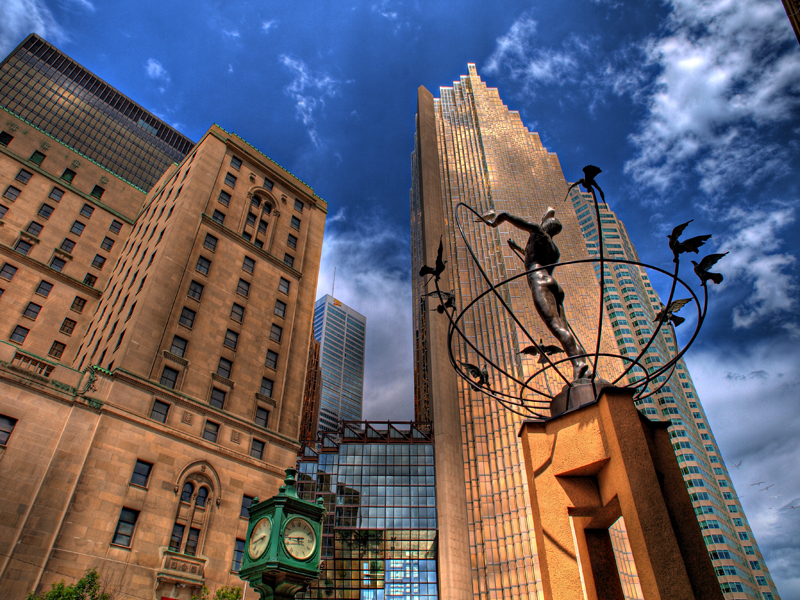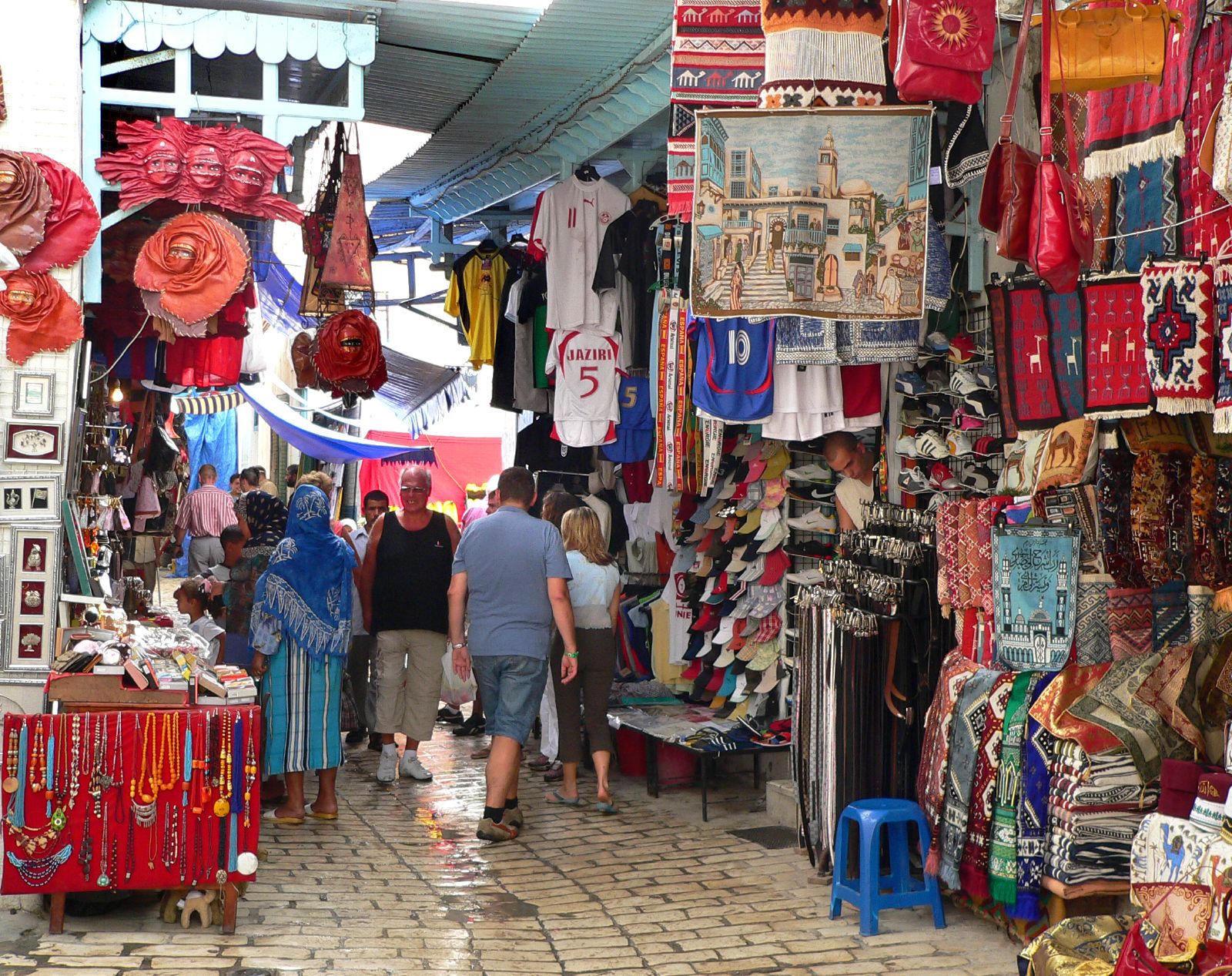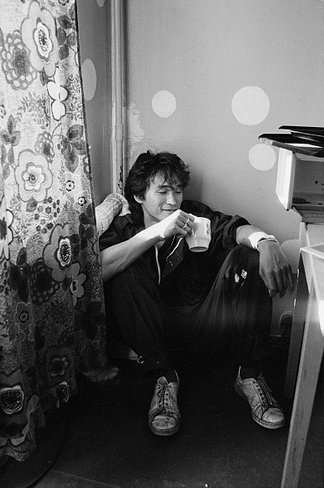|
Central Asia Street
Central Asia Street () is the nickname for an area in Gwanghui-dong, Jung District, Seoul, South Korea. It is so named because of the relatively high density of Central Asia-themed businesses in the area. In addition to its population of foreigners of non-Korean ethnicity, the area also has a notable population of Koryo-saram, ethnic Koreans from the former Soviet Union. The area reportedly formerly went by the name Little Moscow. Cyrllic, a script used for many Central Asian and Slavic languages, can be widely seen in the area. The ground level of the street has a number of restaurants and bars that specialize in Central Asian and Russian food and drinks, including kebabs and vodka. Along the main entrance to the street is a 10-story building known as "Mongolian Town". In addition to stores and restaurants, many of the establishments cater to the needs of the locals, such as banks, hair salons, and job agencies. The area is near the Dongdaemun History & Culture Park station an ... [...More Info...] [...Related Items...] OR: [Wikipedia] [Google] [Baidu] |
Dong (administrative Division)
A ''dong'' () or neighborhood is a submunicipal level administrative unit of a city and of those cities which are not divided into wards throughout Korea. The unit is often translated as neighborhood and has been used in administrative divisions of both North Korea and South Korea. In South Korea A ''dong'' is, usually, the smallest level of urban-area division to have its own office and staff in South Korea. There are two types of ''dong'': legal-status neighborhood () and administrative neighborhood (). For land property and (old) address, legal-status neighborhood is mainly used. Unlike what the name indicates, they are not defined by any written law. Instead, most of names are came from customary law, which indicates historical names. "Administrative neighborhood", however, is defined by local governments to make an office (community center). Community centers provide some administrative services such as residential/birth registration or death notification, to relieve ... [...More Info...] [...Related Items...] OR: [Wikipedia] [Google] [Baidu] |
Itaewon
Itaewon (; ) is a commercial district in Seoul, South Korea, known for its nightlife and multi-ethnic population. Etymology The name Itaewon was originally derived from the name of an inn located there during the Joseon period. Today it's called Itaewon alluding to its abundance of pear trees (梨泰院). According to a folktale, the name was also written using different Hanja characters that alluded to foreign babies (異胎院). When the Japanese invaded Seoul (1592–1593) during the Imjin War, a group of Japanese soldiers seized a Buddhist temple in what is now Itaewon where Buddhist nuns lived. The soldiers stayed at the temple for a while and raped the Buddhist nuns. When the soldiers left they burned down the Buddhist temple. The raped Buddhist nuns now homeless settled nearby and eventually gave birth to children. People from neighboring villages named the area where the children were raised ''Itaewon'' in a portmanteau of terms meaning ''different'', ''foreign'' and ''fe ... [...More Info...] [...Related Items...] OR: [Wikipedia] [Google] [Baidu] |
Mongolian Diaspora In Asia
Mongolian may refer to: * Something of, from, or related to Mongolia, a country in Asia * Mongolian people, or Mongols * Bogd Khanate of Mongolia, the government of Mongolia, 1911–1919 and 1921–1924 * Mongolian language * Mongolian alphabet * Mongolian (Unicode block) * Mongolian cuisine * Mongolian culture Other uses * Mongolian idiocy, now more commonly referred to as Down syndrome See also * * Languages of Mongolia * List of Mongolians * Mongolian nationalism (other) * Mongolian race (other) * Mongoloid (other) Mongoloid refers to an outdated historical grouping of various people indigenous to East Asia, Central Asia, Southeast Asia, North Asia, Polynesia, and the Americas. Mongoloid may also refer to: * Mongoloid idiot, previously used to refer to a p ... {{disambiguation Language and nationality disambiguation pages ... [...More Info...] [...Related Items...] OR: [Wikipedia] [Google] [Baidu] |
Russian Diaspora In Asia
Russian(s) may refer to: *Russians (), an ethnic group of the East Slavic peoples, primarily living in Russia and neighboring countries *A citizen of Russia *Russian language, the most widely spoken of the Slavic languages *''The Russians'', a book by Hedrick Smith *Russian (comics), fictional Marvel Comics supervillain from ''The Punisher'' series *Russian (solitaire), a card game * "Russians" (song), from the album ''The Dream of the Blue Turtles'' by Sting *"Russian", from the album ''Tubular Bells 2003'' by Mike Oldfield *"Russian", from the album '' '' by Caravan Palace *Nik Russian, the perpetrator of a con committed in 2002 See also * *Russia (other) *Rus (other) *Rossiysky (other) Rossiysky (masculine), Rossiyskaya (feminine), or Rossiyskoye (neuter), all meaning ''Russian Federation, Russian'', may refer to: *Rossiysky, Orenburg Oblast, a rural locality (a settlement) in Orenburg Oblast, Russia *Rossiysky, Rostov Oblast, a r ... * Russian River ... [...More Info...] [...Related Items...] OR: [Wikipedia] [Google] [Baidu] |
Tourist Attractions In Seoul
Tourism is travel for pleasure, and the Commerce, commercial activity of providing and supporting such travel. World Tourism Organization, UN Tourism defines tourism more generally, in terms which go "beyond the common perception of tourism as being limited to holiday activity only", as people "travelling to and staying in places outside their usual environment for not more than one consecutive year for leisure and not less than 24 hours, business and other purposes". Tourism can be Domestic tourism, domestic (within the traveller's own country) or International tourism, international. International tourism has both incoming and outgoing implications on a country's balance of payments. Between the second half of 2008 and the end of 2009, tourism numbers declined due to a severe Economy, economic slowdown (see Great Recession) and the outbreak of the 2009 2009 flu pandemic, H1N1 influenza virus. These numbers, however, recovered until the COVID-19 pandemic put an abrupt end to th ... [...More Info...] [...Related Items...] OR: [Wikipedia] [Google] [Baidu] |
Multiculturalism In South Korea
Multiculturalism is the coexistence of multiple cultures. The word is used in sociology, in political philosophy, and colloquially. In sociology and everyday usage, it is usually a synonym for ''Pluralism (political theory), ethnic'' or cultural pluralism in which various ethnic and cultural groups exist in a single society. It can describe a mixed ethnic community area where multiple cultural traditions exist or a single country. Groups associated with an Indigenous peoples, indigenous, aboriginal or wikt:autochthonous, autochthonous ethnic group and settler-descended ethnic groups are often the focus. In reference to sociology, multiculturalism is the end-state of either a natural or artificial process (for example: legally controlled immigration) and occurs on either a large national scale or on a smaller scale within a nation's communities. On a smaller scale, this can occur artificially when a jurisdiction is established or expanded by amalgamating areas with two or more di ... [...More Info...] [...Related Items...] OR: [Wikipedia] [Google] [Baidu] |
Shopping Districts And Streets In South Korea
Shopping is an activity in which a customer browses the available goods or services presented by one or more retailers with the potential intent to purchase a suitable selection of them. A typology of shopper types has been developed by scholars which identifies one group of shoppers as recreational shoppers, that is, those who enjoy shopping and view it as a leisure activity.Jones, C. and Spang, R., "Sans Culottes, Sans Café, Sans Tabac: Shifting Realms of Luxury and Necessity in Eighteenth-Century France," Chapter 2 in ''Consumers and Luxury: Consumer Culture in Europe, 1650-1850'' Berg, M. and Clifford, H., Manchester University Press, 1999; Berg, M., "New Commodities, Luxuries and Their Consumers in Nineteenth-Century England," Chapter 3 in ''Consumers and Luxury: Consumer Culture in Europe, 1650-1850'' Berg, M. and Clifford, H., Manchester University Press, 1999 Online shopping has become a major disruptor in the retail industry as consumers can now search for product ... [...More Info...] [...Related Items...] OR: [Wikipedia] [Google] [Baidu] |
Koryo-saram Communities In South Korea
Koryo-saram (; ) or Koryoin () are ethnic Koreans of the former Soviet Union, who descend from Koreans that were living in the Russian Far East. Koreans first began settling in the Russian Far East in the late 19th century. Their numbers increased as Koreans fled the Japanese colonization of Korea beginning in 1910. A number of Koryo-saram became significant Korean independence activists, such as Hong Beom-do and Chŏng Sangjin. In 1937, they were all deported to Central Asia. They have since dispersed throughout the former Soviet Union, with significant populations in Siberia, Uzbekistan, and Kazakhstan. Approximately 500,000 Koryo-saram reside in the former Soviet Union, primarily in the now-independent states of Central Asia. There are also large Korean communities in Southern Russia (around Volgograd), the Russian Far East (around Vladivostok), the Caucasus, Kyrgyzstan, Turkmenistan, and southern Ukraine. While the ability to speak Korean has become increasingly rare among ... [...More Info...] [...Related Items...] OR: [Wikipedia] [Google] [Baidu] |




